Hilketa is a sport, first played in the United States, in which two teams of eleven players attempt to score points, primarily by tearing off the head of one of the opposing players and either throwing or carrying the head through goal posts. Other points may be accrued through defensive or offensive action. Because of the violent nature of the sport, no human bodies are on the field during play; all play is performed with personal transports (“threeps”). Because of this, and due to the fact that until very recently all threeps were operated by people with Haden’s Syndrome, to this day all professional Hilketa athletes are “Hadens.”
Buy the Book
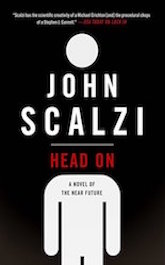

Head On: A Novel of the Near Future (Lock in)
Despite being a relatively new sport, the kinetic nature of the game and its scoring has caused the game to become exceptionally popular in a very short time, although the highly-specialized and expensive nature of the threeps involved in the game means that live exhibitions of the sport are largely confined to the professional, major league level. The top league of the sport is the North American Hilketa League (NAHL), which currently fields twenty-four teams in the United States, Canada and Mexico, across two conferences, each with two divisions. There are plans to add four new teams to the league within two years, and another four within ten.
The name of the sport comes from the Basque word for “murder.”
Rules and Play
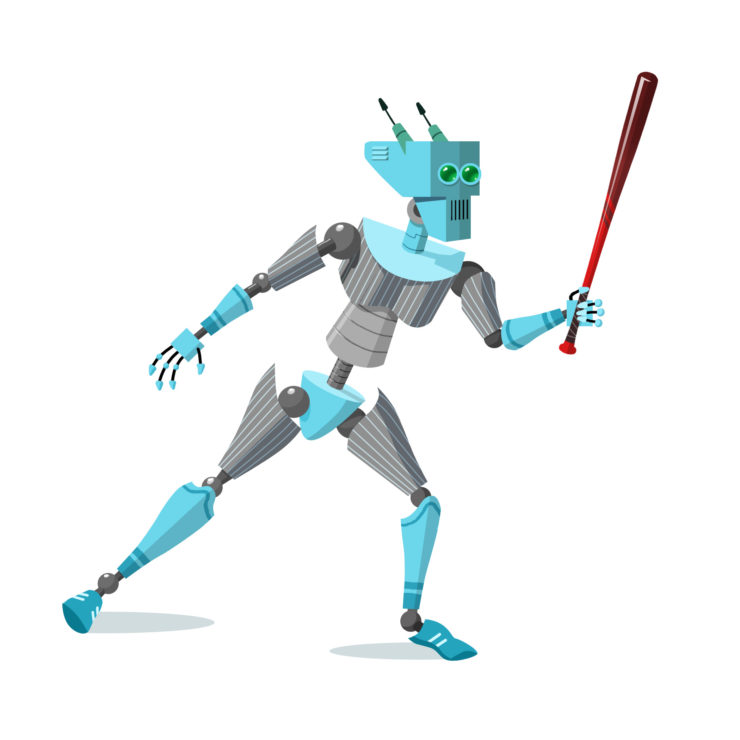
Hilketa is played by two teams of eleven players each, with five additional players on each side held in reserve. No more than eleven players per team may be on the field at any one time.
The shape and size of the Hilketa field is highly variable depending on the venue but must have two features: Roughly symmetrical and connected field “sides” of between 3200 and 4600 yards square, and identical goal posts at the end of each side. These dimensions are initially derived on the shape and format of an American football field, on which the first games of Hilketa were played, and which serves as the “default” field for the game. The flexibility on field size allows the game to be played in many existing sports venues and allows for some variability in game strategy, based on field dimensions and conditions. In addition to field size, the game allows for the addition of certain field “features” including small hills and other topographical challenges.
Additionally, at ten points on each side of the field are placed weapons: Two bats, two hammers, two axes, two swords, one crossbow and one grenade, one randomly placed at each station. The crossbow bolt features a soft head with sensors attached to calculate “damages” which are then assessed to the target threep’s functionality; the grenade is likewise designed. Melee weapons are additionally designed to mimic damage without actually destroying the threeps they are used on. Players may, but are not required to, select a weapon during play.
There are no set positions in Hilketa; each team appoints a team captain to preside over ceremonial moments, such as the beginning coin toss. However, there are four different approved threep models for Hilketa play which offer various offensive and defensive advantages over four core attributes: Strength, speed, agility and damage tolerance. These are:
- General: The basic, “all purpose” threep model which offers a balanced approach to speed, strength, agility and damage tolerance;
- Tank: The strongest threep, and the one best able to withstand attack, but slow and limited in terms of agility;
- Scout: The fastest of the threeps and also the easiest to damage, with agility between those of a Tank and General;
- Warrior: The most agile of the threep models, relatively strong but relatively slow and somewhat more susceptible to damage. Warriors are the only players allowed to carry more than one weapon at a time, effectively allowing for two weapon attacks where other players can manage one.
Each of these threep models has the performative range of attributes defined by the NAHL. Beyond this range, a team manager has the option of increasing any one of these attributes by up 20% in any one player for the length of either a game or of a play campaign, at the cost of commensurately reducing those abilities by the same amount across all the rest of the players on the team; i.e., if the manager makes one player 10% faster than the usual range of their threep model, every other player on the team becomes 10% slower, regardless of model. This creates an interesting risk/reward strategy challenge in many situations.
The team manager assigns threep models for both the active and reserve players prior to the start of any game; once the models have been assigned for a game, they may not be swapped out, although active players may be swapped out for reserve players at the beginning of any new play campaign. However, once swapped, the previously active players may not return to the game unless their replacement is unable to continue play for some reason accepted by the game officials. Likewise, the threeps the players use may not themselves be swapped out during the game unless a malfunction occurs that is not related to the game, as judged by the game officials. In this way, “injuries” and wear and tear play a factor in game management.
The game consists of two 45-minute halves; the captains of both teams meet midfield for a coin toss; the winner of the toss may choose to defend or attack. After the first half the teams switch field sides.
Each half begins with the first “campaign” of the game. Campaigns are the period of time in which an attacking team first attempts to rip the head off the body of the designated opposing player, and then deliver that head to their goal. These campaigns have two formal parts: The “capo,” the four-minute period of time during which the attacking team must acquire the head; and the “coda,” the four-minute period of time in which the team must deliver the head to the goal.
The goal consists of two large poles, spaced eight yards apart, with an additional two poles on either side, eight yards apart from their respective poles. Additionally, between the two central poles, twenty feet up, is strung a one-yard-wide hoop, in the center of a net a yard wide at the top and bottom and spanning the length of the central poles. To score, the head must be thrown or carried past the goals or through the hoop. A goal through the central posts is an “inside goal”; through the outer posts is an “outside goal,” and through the hoop is an “upper goal.” If the head is thrown it must not touch the ground prior to entering the goal. To throw a head into the goal, the player must be within ten yards of the goal.
At the start of each campaign the attacking team begins inside a ten-yard wide “starting circle” directly in front of their center goal posts; the defending team may place themselves anywhere they like on their half of the field, which usually means near the weapon stations. No weapons may be touched prior to the start of a campaign; no player may take weapons from the opposing team side until the attacking team breaches the defending team side.
Play begins when the starting whistle is blown and the “goat,” the defending team player whose head is to be the target, is chosen. The goat is chosen randomly by computer and is visually signaled to opponents and to spectators by a ring of lights, set in the threep head or neck, becoming illuminated; they will remain illuminated for the remainder of the campaign. The goat, alone among the defending players, is not allowed to use a weapon; they must evade capture by running or by fighting using their own bodies. A goat may disarm an opponent by taking a weapon from them and discarding it (or giving it to a team member to use) but may not use it offensively themselves.
When a goat is selected and the campaign whistle blows, the attacking team has thirty seconds for at least one of their members to breach the opposing side of the field. Once the breach has occurred, all players may engage on either side of the field, and pick up any remaining available weapons. If the attacking team does not breach within thirty seconds, a penalty is assessed, points deducted from scoring, and a new campaign begins with the attacking team now on defense. Likewise, until the defensive side is breached, defensive players may not enter the attacker’s side of the field.
The goat’s head may be removed by either an opposing player striking it off with a weapon (headshots with a crossbow bolt will trigger the head to fall off) or by removing it physically with their own threep. Once the head is removed, the opposing player with the head is now the “carrier” and must transport it to their own goal. While a player is a carrier, they may not carry a weapon; they are vulnerable to attack without the help of their teammates.
A carrier may choose to hand or pass the head to a teammate. The new carrier must then drop any weapons.
Defensive players must attempt to retrieve the head by wresting the head from the carrier, disabling the carrier and taking the head, or intercepting the head while it is being passed. Once the defensive players have possession of the head, they have the option of either running out the clock for the coda portion of campaign, which offer no points, or returning the head to the goat’s body, which does. The head must be physically returned and in possession of another defensive player when it touches the body. Once the goat’s head touches any part of the goat’s body in this manner, it is considered returned and the coda portion of the campaign is over.
Attacking players may attempt to retake the head; defensive players to again retrieve it and so on until the end of the coda portion of the campaign. As long as the head is in bounds and neither through a goal nor returned, it is in play.
If a carrier goes out of bounds, or the head otherwise leaves the field, the play clock is stopped while the head is retrieved and thrown back into play by a game official at the place it went out of bounds. The official will throw the head back in while facing away from the field and the teams will fight to retrieve the head. If the head was out of play because a carrier left the field, the carrier will not come onto the field again until the head is again in play. Additionally, any player other than a carrier who steps out of bounds during a campaign is removed from play for the duration of the campaign; play will continue with the player’s team minus that player.
If the attacking team cannot take the goat’s head in the four minutes of the capo portion of the campaign, the campaign is over and a new campaign begins with the attacking team becoming the defending team. If the attacking team cannot score a goal during the four minutes of the coda portion of the campaign, the campaign is over and a new campaign begins with the attacking team becoming the defending team.
There is a brief pause between campaigns while the ground crews reset the field and the team technicians reattach any threep limbs severed during play.
If time in a half runs out during the capo portion of a campaign, play stops. If it runs out during the coda portion, play continues only until current carrier scores, loses possession of the head or is unable to move the head on the field for three seconds, due to tackling or being physically blocked from movement by opposing team members. In this situation, the carrier may not give or pass the head to another team member.
Damage zones on player threeps require a special mention. As noted above, the melee, crossbow and grenade weapons are designed to simulate damage to threeps rather than offer real, substantive damage to the machines themselves; although in the case of the melee weapons some actual damage can occur simply as wear and tear. Both the weapons and the threep bodies carry an array of sensors that allow the threep bodies to know what weapons are attacking them and how much “damage” the threep is taking and where. As a result, threep bodies will commensurately adjust their abilities to the amount of damage taken for the remainder of the campaign. If the overall damage to the threep passes a certain threshold, the threep will deactivate and be out of play for the remainder of the campaign.
Likewise, when appropriate to the nature and force of the “damage,” a threep can lose limbs or a head during play. If a threep loses a limb, it may continue play without the limb to the extent that it is able to with its remaining limbs. If a threep loses its head, it will be out of play for the remainder of the campaign.
Another player may not use a severed limb or head from a threep as a weapon without penalty, but a player whose threep’s limb was severed may retrieve that limb and use it as a weapon.
Damage may also be incurred through physical melee without weapons, although usually a lesser amount per each attack (excepting attacks from a Tank threep).
Note that when a player is the “goat,” the force required to remove their head is roughly half of what is required otherwise; therefore it is possible for a goat’s head to be removed by hand.
NAHL rules require player threeps not to have their pain sensory apparatus entirely muted, in order to assist with threep care and maintenance; pain sensation is usually transmitted at 5% to 10% of “normal” pain settings.
Scoring
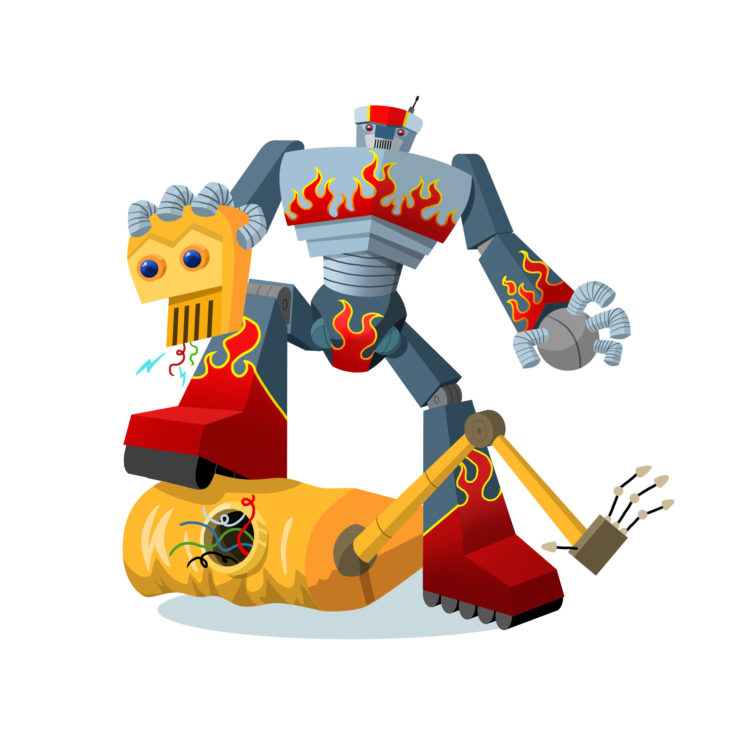
Scoring is as thus:
- Removal of the head during the capo portion of the campaign: 1 to 4 points, depending on the time. If the head is removed during the first minute of play, four points are awarded; if during the second minute of play, three points; in the third minute, two points; in the final minute, one point.
- Time of completion of goal during the coda portion of the campaign: 1 to 4 points, as above.
- Outside goal, thrown: one point.
- Outside goal, run in: two points.
- Inside goal, thrown: three points.
- Inside goal, run in: five points.
- Upper goal: ten points.
NOTE: If an upper goal is attempted and failed, player shall receive NO goal points. An attempt will be defined as the head touching or going over the net the upper goal is contained in, without entering the upper goal. If an upper goal is attempted but the head hits the goal net and does not go through, the player attempting the upper goal may try to retrieve the head before it touches the ground and convert it to an inside or outside goal instead. No other player may attempt a goal after an upper goal has been attempted. Likewise, no opposing team player may try to intercept the head after an upper goal attempt. A failed upper goal attempt ends the coda portion of that campaign. An attempt at the upper goal that passes under the net without touching it will be judged an inside goal.
- Returning the goat head: 1 to 4 points, depending on time remaining in the coda portion, as specified above.
With the exception of points for returning the goat head, all points will be awarded only after the head has passed through the goal. At that time, all points accrued during a campaign will be added to the team’s tally. No goal, no points.
Thus the maximum number of points accruable during a successful attacking campaign is eighteen; the minimum is three. The maximum number of points accruable for a successful defensive campaign is four; the minimum is zero.
Penalties assessed during play may result in the docking of points from a final score. Penalties include not breaching the defensive field in the required time, intentionally stepping out of bounds, and using unauthorized weapons.
League, Rankings and Scoring
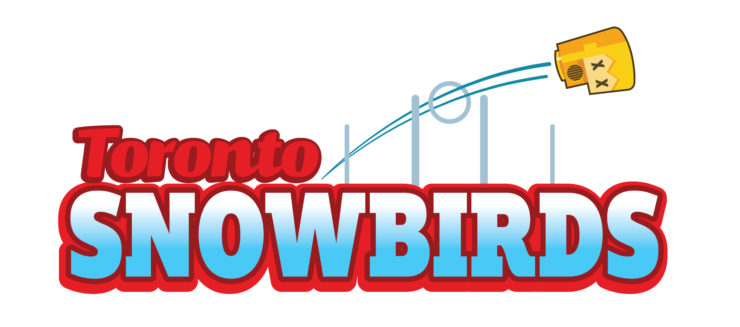
The North American Hilketa League currently features twenty-four teams, in two conferences, with two divisions each. They are:
EASTERN CONFERENCE
- Northeast Division
- Boston Bays
- Columbus Navigators
- New York Knights
- Pittsburgh Pitbulls
- Toronto Snowbirds
- Michigan Destroyers
- Southeast Division
- Atlanta Dragons
- Charlotte Webslingers
- Orlando Mad Mice
- Houston Hurricanes
- Dallas-Ft. Worth Stampede
- Tulsa Tornados
WESTERN CONFERENCE
- Northwest Division
- Chicago Blues
- Portland Pioneers
- Rocky Mountain High
- Seattle Malamutes
- Twin City Princes
- Vancouver Lights
- Southwest Division
- Arizona Howlers
- Las Vegas Aces
- Los Angeles Devils
- Mexico City Aztecs
- Oakland Fire
- San Diego Surf
Within the next two years franchises will be awarded in four pre-selected cities, one in each division: Philadelphia in the Northeast, Washington DC in the Southeast, Kansas City in the Northwest and Austin in the Southwest.
The game season is similar to American football with fourteen regular season games, from April to July, and a three-game post-season completing in August. Each team plays the five other teams from their division, five from the conference’s other division, and two from each division in the alternate conference. Playoffs include the division championships, the conference championships, and the league championship, known as the Haden Cup.
Rankings are determined on a point system similar to hockey, with three points awarded for a win, one for a tie, and none for a loss. The team with the best regular season record in terms of points is awarded the Sebring-Warner Shield.
The current holder of the Haden Cup is the Boston Bays; the current holder of the S-W Shield is the Vancouver Lights.
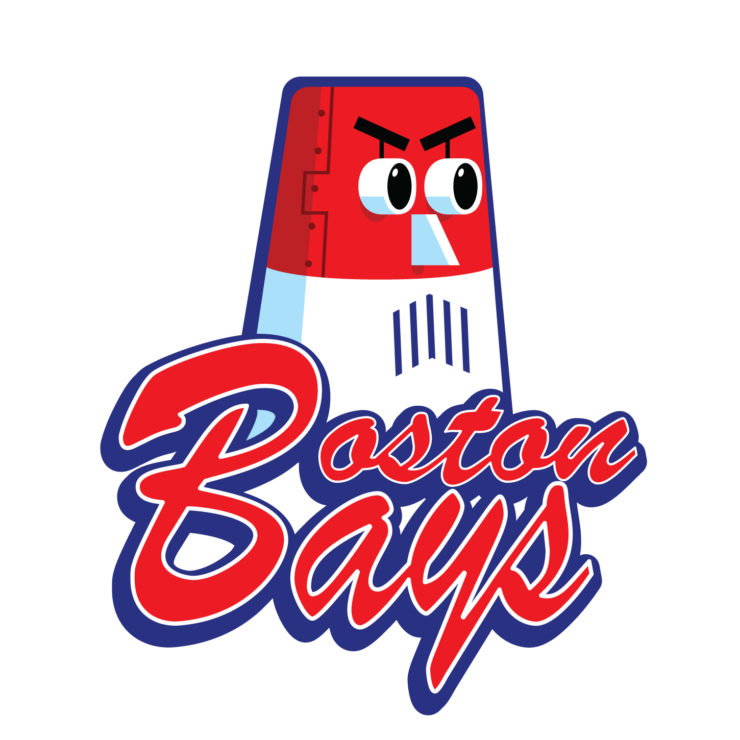
Special Challenges and Controversies
- Because Hilketa requires the use of threeps, all current professional players are athletes with Hadens. This has caused complaints from non-Haden Hilketa players in the amateur and development virtual leagues (in which no physical threeps are used), who have alleged discrimination and claim to be as good as, if not better than, current professional Hilketa players and have threatened to creating competing leagues. Because Hilketa is copyrighted and trademarked by the NAHL, and the use of threeps until recently regulated by the United States and other governments, these protests have gained little traction as yet.
- Because Haden athletes’ physical bodies require constant medical attention and sometimes cannot be physically moved without significant cost/effort, a number of Hilketa players pilot their threeps remotely rather than from the staffed and medically state-of-the-art game rooms at the stadiums themselves. This has given rise to accusations of “pirate subs,” in which underperforming players are illegally swapped out before or even during games by more accomplished players. It also makes it more difficult to monitor players for performance-enhancing drugs.
- Despite relying heavily on Haden athletes, the franchise owners the NAHL are largely comprised of non-Hadens, with only one owner (Gabrielle Garcia, Arizona Howlers) related to a Haden. This fact combined with a league-wide salary cap and ceiling on wages has led some Hadens to protest or boycott the league. The NAHL has responded by saying that it is seeking out Haden and Haden-related owners for its upcoming expansion franchises; most notable among potential new franchise owners is billionaire real-estate developer and former NBA star Marcus Shane.
- Some Basque speakers have complained about the name of the sport, arguing that it places their culture in a negative light.
Buy the Book


Head On










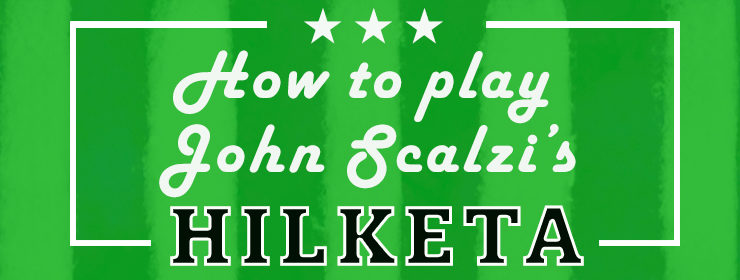
Very enjoyable book, thanks for the detailed rules.
I’ve got to wonder, though, what the heck made you think up this game? It’s pretty non-obvious, although it did make for a good SF-sports-league setting for the story.
Muggles have figured out ways to play Quidditch. How long before non-Haydens start playing Hilketa IRL?
I suspect that when we do, we’ll need more than 11 players and 5 subs per side.
@2 Probably a crack legal team, too.
Though it would be possible in The Dispatcher ‘verse. It makes dueling sound tame.
It’s surprising this game isn’t a bigger hit, it’s so awesome.
When will this simulator/game be on consoles and PC’s? :)
Why did we as Pittsburgh get the Pitbulls as a theme? XD Hopefully our colors are at least black and yellow! :D
Within the book world, is this played internationally?
Sounds like a certain author is angling for a video game deal!
@7 The league spans the US, Canada, and Mexico. There are plans for expanding overseas.
The Atlanta Dragons and … the Charlotte Webslingers? The Twin City Princes (purple uniforms, of course)?
Right, Scalzi …
@9: In the European and South American version, you cannot carry or throw the head; you can only kick it.
Typo in the second bullet in the final section: “cannot by physically” should read “cannot be physically”
@12 – Fixed, thank you!
As a Basque, I’m really intrigued (rather than offended) by how/why the author chose a Basque word for naming the sport.
I like the Twin Cities Princes. We can keep the purple color theme and the still use the Purple People Eaters meme.
I’ve not read the book yet but after reading this, it’s just been bumped up the ‘TBR’ list! Locked In was brilliant.
@9 – Video game? It’s a very visual story, I’m hoping for a movie!
@17 and @9: you think too small. In 10-20 years I want this IRL!